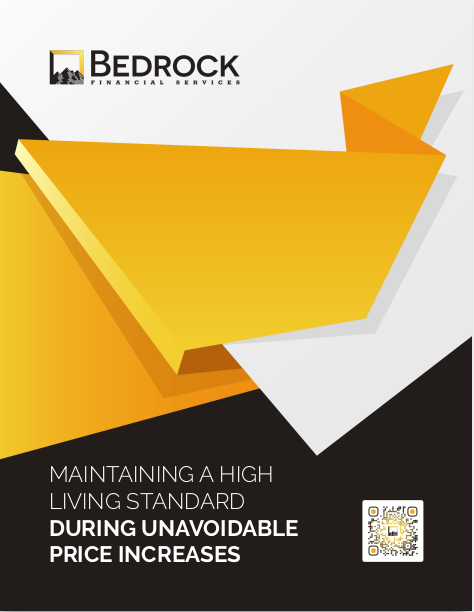Key Takeaways
-
Clients often feel overwhelmed by retirement planning, but you can simplify the process by offering a structured, step-by-step framework tailored to their goals, income sources, and timelines.
-
Building clarity in retirement conversations boosts trust, helps clients make informed decisions, and differentiates you as a professional who provides real solutions, not just products.
Start by Defining What Retirement Actually Means to the Client
Before diving into numbers or accounts, pause and reframe the conversation around lifestyle. Your client may have a vision for retirement, but without clarity, it’s difficult to build a financial strategy that fits.
Ask guiding questions:
-
What does a typical day look like in retirement?
-
Will they work part-time, volunteer, or relocate?
-
Are there any dependents or legacy goals?
-
How important is travel, leisure, or family support in their future?
-
Do they anticipate needing to support adult children or grandchildren?
Encouraging specificity helps shift the focus from vague fears to tangible planning. When a client visualizes what retirement actually feels like—not just financially, but emotionally—they’re more motivated to act. This vision becomes your compass, making it easier to align strategy with lifestyle goals.
Identify All Income Sources and Gaps
The most grounded retirement plans begin with a complete income picture. In 2025, clients often juggle multiple income sources beyond the standard options, and failing to account for all of them can create unrealistic expectations.
Start by identifying the predictable sources:
-
Social Security benefits (available from age 62, with full benefits at 67 for those born in 1960 or later)
-
Employer pensions or government annuities
-
Required Minimum Distributions (RMDs), which must begin at age 73
Then include supplemental and variable sources:
-
401(k), IRA, or Thrift Savings Plan withdrawals
-
Roth accounts (particularly useful for tax-free withdrawals in later years)
-
Brokerage accounts and dividends
-
Rental or passive business income
-
Sale of business interests or real estate assets
-
Part-time consulting or bridge work income
Once you map out these sources, assess the gap between expected income and realistic spending needs. This includes:
-
Lifestyle expenses by category (housing, food, travel, healthcare, etc.)
-
Inflation-adjusted projections
-
One-time expenses like home repairs or family gifts
This is where your value becomes clear: illuminating the shortfall early and showing how it can be addressed through strategic planning.
Anchor the Plan to Specific Timelines
Vague goals like “retire at 65” aren’t actionable. Anchor your client’s plan to key timelines, events, and transitions to build a roadmap they can visualize and follow.
Establish clear milestone ages:
-
Age 59½: Penalty-free access to retirement accounts
-
Age 62: Earliest Social Security eligibility (with reduced benefits)
-
Age 65: Medicare eligibility begins
-
Age 67: Full retirement age for Social Security (for those born in 1960 or later)
-
Age 70: Maximum Social Security benefit achieved
-
Age 73: RMDs begin for retirement accounts
Encourage clients to segment retirement into three distinct stages:
-
Early Retirement (60–67): Often the most active years with higher discretionary spending
-
Mid Retirement (68–75): Stable lifestyle, regular healthcare expenses, moderated travel
-
Late Retirement (76+): More focus on healthcare, estate planning, and simplified living
Each stage calls for different withdrawal rates, investment strategies, and planning assumptions. Present this segmentation visually and use it to tie financial decisions to real-world needs.
Simplify Asset Allocation by Focusing on Purpose
Clients are often overwhelmed by investment terms. Instead of discussing allocation in abstract terms, show them how each asset has a role in their plan.
Group their financial assets by time horizon and purpose:
-
Now (0–2 years): Emergency fund, short-term liquidity, cash equivalents
-
Soon (3–10 years): Income generation from low-risk investments like bonds or dividend-paying stocks
-
Later (10+ years): Long-term growth through equities or alternative investments to protect against inflation and ensure longevity funding
Use language like “income now, income later, and legacy” to resonate emotionally. This approach makes the plan feel actionable, not theoretical.
You may also use percentages as a secondary layer—not a primary one. This keeps the client grounded in outcomes, not numbers.
Build a Clear Withdrawal Strategy
A solid accumulation plan is only half the equation. Without a withdrawal strategy, clients risk depleting funds too quickly—or missing out on lifestyle opportunities they could afford.
Guide them through a coordinated withdrawal process:
-
Start by calculating a sustainable withdrawal rate. In 2025, 3.5%–4% is common, but should be adjusted for market cycles, healthcare expenses, and longevity.
-
Plan tax-efficient withdrawal sequencing: taxable accounts → traditional retirement accounts → Roth accounts.
-
Consider bridging strategies for clients retiring before Medicare or Social Security kicks in to manage tax brackets and preserve qualified assets.
-
Periodically reassess withdrawal amounts against portfolio performance and spending behavior.
Show scenarios using software or visual charts that illustrate the probability of funds lasting through different time horizons. This data-backed reassurance is often the deciding factor in getting buy-in.
Manage Healthcare Expectations Proactively
Medical costs are one of the largest unknowns in retirement. In 2025, with Medicare costs trending higher and long-term care needs growing, this is a non-negotiable part of the plan.
Your healthcare readiness checklist should include:
-
Budgeting for Medicare premiums: Part A (if applicable), Part B ($185/month in 2025), Part D, and Medigap or Advantage plans
-
Estimating out-of-pocket costs like coinsurance, deductibles, and non-covered services
-
Planning for dental, vision, and hearing, which are not fully covered by Medicare
-
Long-term care funding—via savings, hybrid insurance options, or state programs
-
Reviewing existing health insurance coverage before age 65 to coordinate the transition to Medicare smoothly
Having this conversation early prepares clients and helps them avoid rushed decisions that lead to gaps or penalties.
Clarify Tax Impacts Over Time
Taxes remain one of the biggest blind spots for retirees. The difference between a tax-aware and tax-unaware strategy can cost tens of thousands of dollars over a retirement lifespan.
Help clients stay ahead by:
-
Strategically converting portions of traditional retirement accounts to Roth IRAs during low-income years (often post-retirement, pre-RMD)
-
Harvesting capital gains or losses based on marginal bracket thresholds
-
Understanding how Social Security benefits are taxed, and minimizing the provisional income that triggers higher taxation
-
Planning for IRMAA surcharges on Medicare Parts B and D—especially if a one-time capital gain (like a house sale) could push them into a higher tier
Incorporating tax mapping in your annual reviews turns your service from static planning to dynamic guidance.
Automate Where Appropriate, But Personalize the Plan
Technology can take care of repetitive tasks, but your client still wants to feel seen. Strike a balance between automation and personal interaction.
Automation tools to consider:
-
Recurring withdrawals aligned with spending needs
-
Tax loss harvesting algorithms to optimize returns
-
RMD calculation tools that prevent missed deadlines
But don’t rely solely on automation. Personalization should include:
-
Annual check-ins and re-evaluation of goals
-
Adjustments for health changes, caregiver responsibilities, or market shifts
-
Communications tailored to their preferences—whether it’s phone, email, or in-person meetings
Your value isn’t in pushing buttons—it’s in translating numbers into decisions that feel right for your client’s life.
Empower Clients With Visuals and Simple Metrics
A confused client delays action. A confident client moves forward. The difference is often how you present information.
Replace complex spreadsheets with:
-
A color-coded retirement timeline showing income sources, benefit milestones, and planning actions
-
A visual showing different spending trajectories with conservative and aggressive assumptions
-
Pie charts and withdrawal flow diagrams that explain where money will come from and when
Don’t underestimate the power of visual repetition. Seeing a visual timeline multiple times across meetings helps embed confidence and clarity.
Reinforce the Plan With Annual Rebalancing and Reviews
Even the most well-structured plan needs adjusting over time. Retirement isn’t static, and your clients’ needs, preferences, and external conditions will evolve.
Make these elements part of your yearly review structure:
-
Review investment performance and rebalance allocations as needed
-
Revisit withdrawal rates and make changes for inflation, income fluctuations, or new goals
-
Evaluate updated tax brackets, healthcare costs, and legislative changes
-
Reaffirm or revise estate planning intentions and beneficiary designations
When clients know that a yearly tune-up is built into the process, they’re more likely to trust the long-term results.
Give Clients Confidence Without Overloading Them
It’s easy to think that more data builds trust. But in retirement planning, clarity matters more than quantity.
Keep your presentations focused on:
-
Simplicity: Use visuals and stories to anchor data
-
Prioritization: Don’t overwhelm with every option—narrow it down to their top 2–3 choices
-
Perspective: Show them that uncertainty is built into the plan—and accounted for
When clients understand how they’ll adapt to unexpected changes, they don’t need to fear them.
Helping Clients Find a Clear Path Is the Work That Matters Most
Retirement planning doesn’t have to feel like solving a puzzle without the box. When you approach it with structure, empathy, and clarity, you become a trusted professional—not just someone selling financial products.
At Bedrock Financial Services, we support financial professionals like you with the tools, automation, and strategies to make these conversations easier and more impactful. We help you focus on what you do best: guiding clients with confidence.
Sign up today to see how our platform can support your retirement planning conversations and make your practice more efficient.







